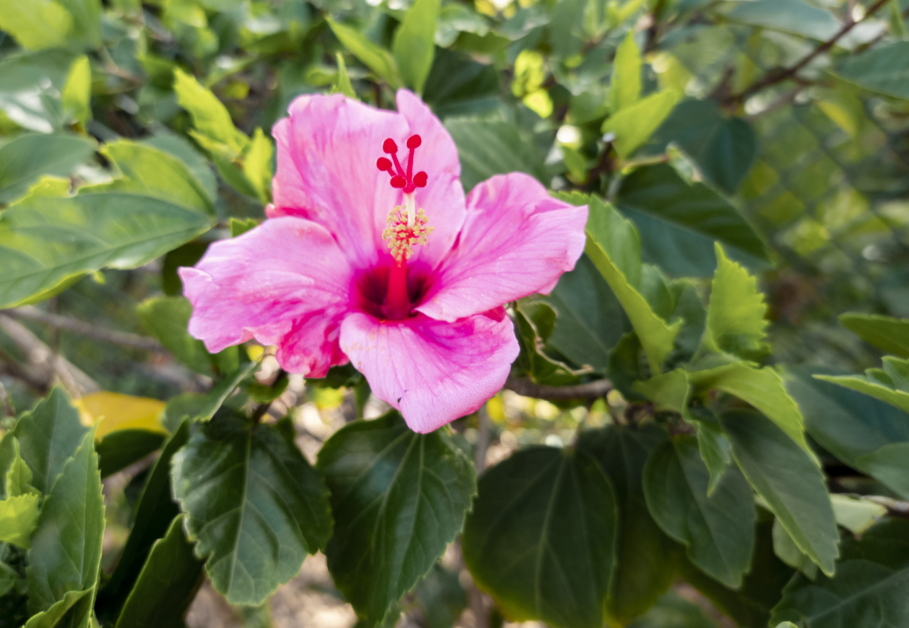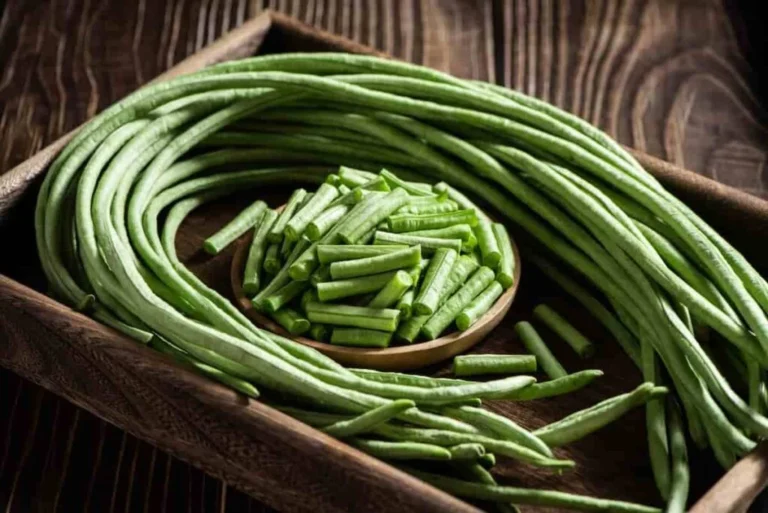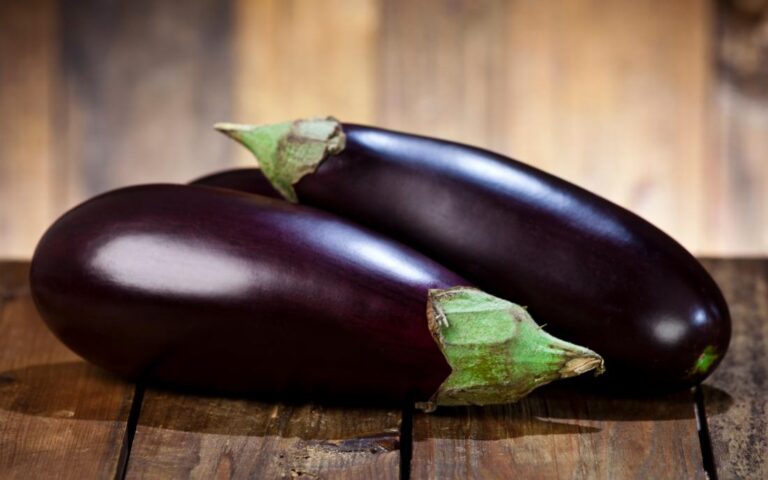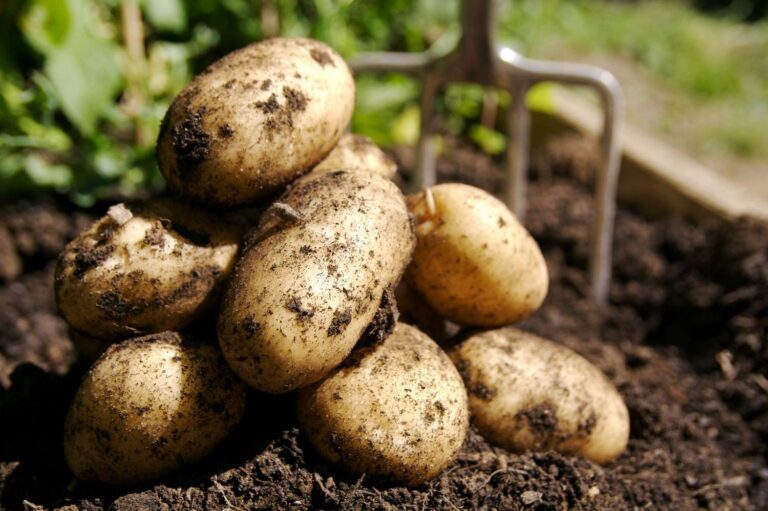Hawaiian Hibiscus: Tropical Treasures
Imagine being whisked away to a tropical paradise every time you glance at your garden. Hawaiian Hibiscus, these vibrant and exotic blooms, can turn this dream into a reality. Did you know that Hawaiian Hibiscus flowers come in a mesmerizing array of colors, each with its unique charm? In this blog, we unveil the secrets to cultivating these tropical treasures in your own backyard.
Our expert insights and practical tips will guide you through the journey of nurturing these stunning flowers with ease. Get ready to infuse your garden with a touch of the Hawaiian islands and create a colorful oasis right at home!
Table of Contents
Hibiscus: An Overview

History of Hibiscus Cultivation
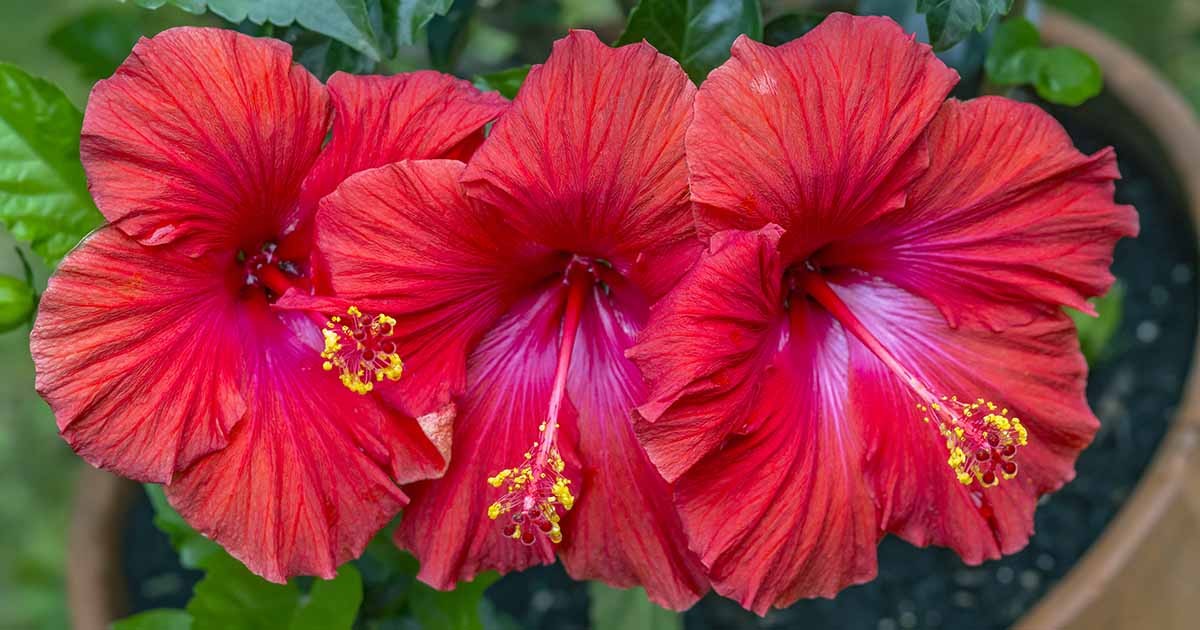
- Origins: Hibiscus plants are native to tropical and subtropical regions around the world.
- Ancient Cultivation: Hibiscus has a long history of cultivation for its ornamental beauty and medicinal properties. Ancient civilizations like the Egyptians and Chinese used hibiscus for various purposes.
- Spread: The cultivation of hibiscus spread to different parts of the world through trade and exploration.
- Modern Cultivation: Today, hibiscus is grown in many countries for its vibrant flowers, which are used in landscaping, herbal teas, and traditional medicine.
While specific details may vary depending on the species of hibiscus, this general overview highlights the historical significance of hibiscus cultivation.
Varieties of Hibiscus Flowers
Hibiscus flowers boast an array of captivating varieties that enchant gardeners and flower enthusiasts alike with their vibrant hues and intricate petal designs.
Let’s explore the fascinating world of hibiscus varieties. These stunning flowers come in different types, each with its own unique features and characteristics. Here’s a concise table summarizing some popular hibiscus varieties, along with their advantages, disadvantages, and key traits:
| Variety | Advantages | Disadvantages | Characteristics |
|---|---|---|---|
| Hibiscus rosa-sinensis (Chinese Hibiscus) | – Vibrant Blooms: Showcases large, colorful flowers. – Indoor Beauty: Can be grown indoors. | – Cold Sensitivity: Not frost-tolerant. – Short Blooming Period: Flowers last only one day. | – Colorful blooms in various shades. – Evergreen foliage. – Cultivated worldwide. |
| Hibiscus syriacus (Rose of Sharon) | – Cold-Hardy: Thrives in temperate climates. – Long Blooming Season: Flowers from summer to fall. | – Invasive Potential: Can self-seed. – Deciduous: Loses leaves in winter. | – Bell-shaped flowers in pink, white, or purple hues. – Tolerates colder temperatures. – Popular as a hedge or specimen plant. |
| Hibiscus mutabilis | – Color-Changing Blooms: Flowers transition from white to pink to red. – Attracts Pollinators: Loved by bees and butterflies. | – Short-Lived Blooms: Each flower lasts only a day. – Deciduous Habit: Loses leaves in winter. | – Large, single or double blooms. – Adaptable to different soil types. – Ideal for mixed borders. |
| Hibiscus schizopetalus | – Graceful Petals: Pendulous, fringed petals create an elegant look. – Unique Appearance: Unusual and eye-catching. | – Limited Cold Tolerance: Requires protection from frost. – Short Blooming Period: Flowers last briefly. | – Distinctive, drooping flowers. – Narrow, serrated petals. – Attracts hummingbirds. – Ideal for hanging baskets or containers. |
| Hibiscus coccineus | – Striking Red Blooms: Bright scarlet flowers make a bold statement. – Tall Stalks: Adds vertical interest. | – Cold Sensitivity: Not suitable for very cold climates. – Short-Lived Blooms: Each flower opens for a day. | – Large, trumpet-shaped flowers. – Tall stems. – Native to North America. – Thrives in moist soil. – Great for attracting hummingbirds. |
| Hibiscus trionum (Flower-of-an-Hour) | – Unique Blooms: White or yellow flowers with a dark center. – Self-Seeding: Produces seeds for new plants. | – Brief Blooming Period: Flowers open for just a few hours. – Weedy Behavior: Can spread aggressively. | – Small, cup-shaped flowers. – Opens in the morning and wilts by evening. – Drought-tolerant. – Considered a wildflower. – Grows well in disturbed areas. |
Remember, hibiscus flowers are not only visually captivating but also hold cultural significance across the globe. Whether you’re a seasoned gardener or a beginner, there’s a hibiscus variety waiting to add beauty and charm to your landscape! 🌺
Characteristics of Hawaiian Hibiscus
Hawaiian hibiscus truly embody the spirit of tropical allure! Let’s delve into their captivating features:
Whether you encounter them in lush gardens or along sandy shores, Hawaiian hibiscus never fail to captivate hearts and evoke the spirit of aloha! 🌺
Symbolism of Hibiscus in Hawaiian Culture
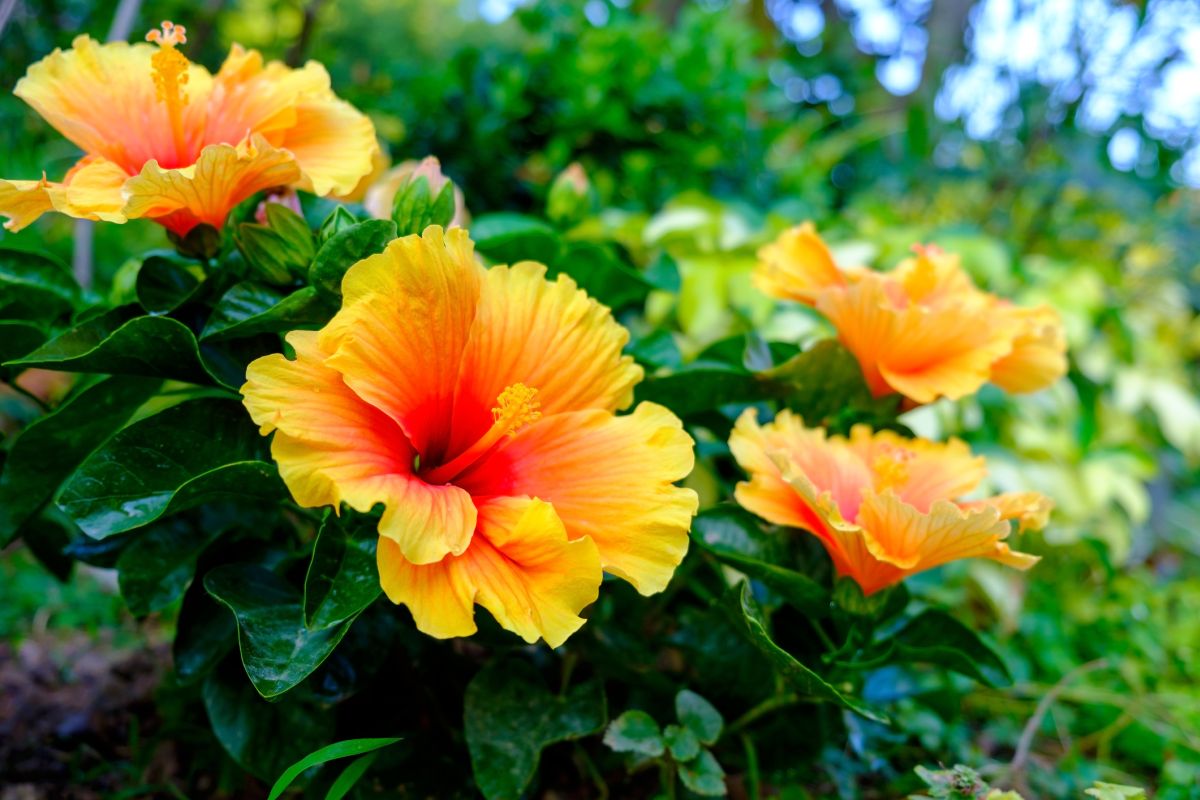
- Symbolism:
- Represents beauty, hospitality, and friendship.
- Used in leis as a welcoming gesture for visitors and loved ones.
- Hawaiian Goddess Pele:
- Associated with Pele, the goddess of fire, lightning, wind, and volcanoes.
- Symbolizes passion, strength, and transformation.
- Folklore and Protection:
- Revered for its ability to bring protection and good fortune.
- A cherished symbol in Hawaiian traditions.
The hibiscus truly weaves a vibrant thread into the cultural tapestry of the islands! 🌺🌴🌿 .
Caring for Hawaiian Hibiscus Plants
Proper care is essential to keep your Hawaiian hibiscus plants thriving. Here are some guidelines to ensure their health and vibrancy:
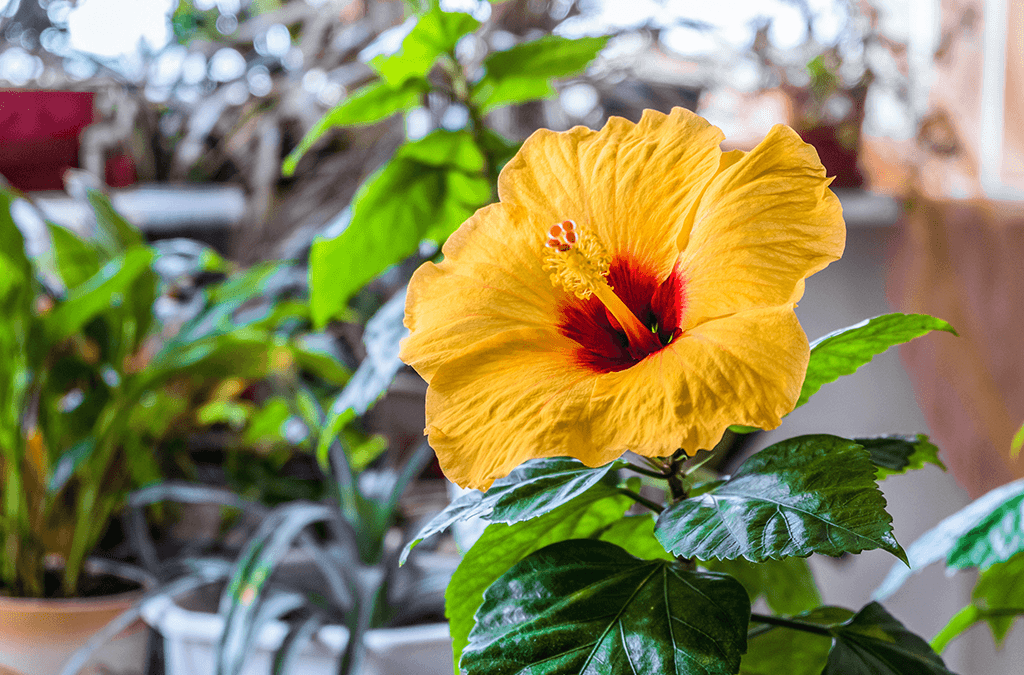
Remember, a little care goes a long way in maintaining the beauty of your Hawaiian hibiscus! 🌺
After using the FoxFarm FX14054 12-Quart Happy Frog Organic Potting Soil, I can confidently say that it has exceeded my expectations. As an avid gardener, I greatly appreciate the convenience of having a ready-to-use potting mix that delivers exceptional results. The soil’s unique blend of beneficial microbes and mycorrhizal fungi has noticeably improved the health and vitality of my plants. Not only did it promote strong plant structure, but it also facilitated vigorous vegetative growth, leading to an abundance of fruits and flowers.
Overall, I am highly impressed with the performance of the FoxFarm FX14054 Happy Frog Organic Potting Soil. It has become my go-to choice for container gardening, and I would confidently recommend it to fellow gardening enthusiasts looking to nurture healthy and thriving plants.
- Ready to Use: The soil comes pre-mixed and is ready to use right out of the bag, saving time and effort for gardeners.
- Beneficial Soil Microbes: Contains beneficial soil microbes and mycorrhizal fungi, which promote healthy root development and enhance nutrient uptake for plants.
- Strong Plant Structure: Promotes strong plant structure, which is essential for overall plant health and resilience.
- Vigorous Growth: Facilitates vigorous vegetative growth, leading to healthier and more robust plants.
- Enhanced Fruit and Flower Production: Helps in enhancing fruit and flower production, contributing to a bountiful harvest or vibrant blooms.
- Maneuverability: The 12-quart bag size offers ease of handling and maneuverability, making it convenient for gardening tasks.
- Easy to Use: Customers find the soil easy to use, contributing to a hassle-free gardening experience.
- Absorbency: Provides good absorbency, ensuring adequate moisture retention for plant growth without becoming waterlogged.
- pH Adjustment: Some users mention that the soil’s pH might need adjustment, as it tends to be slightly acidic out of the bag, which could affect certain plant species’ growth preferences.
- Value: Opinions are mixed regarding the value of the product, with some customers expressing concerns about its price relative to the quantity provided.
- Size: While the 12-quart bag size might be suitable for smaller gardening projects, it may not be sufficient for larger-scale applications, leading to the need for multiple purchases or alternative soil sources.
- Limited Availability: Availability might vary based on location, potentially limiting accessibility for some customers.
Tips for Growing Hibiscus in Tropical Climates
For optimal growth of hibiscus plants in tropical climates, it is essential to provide them with the right conditions.
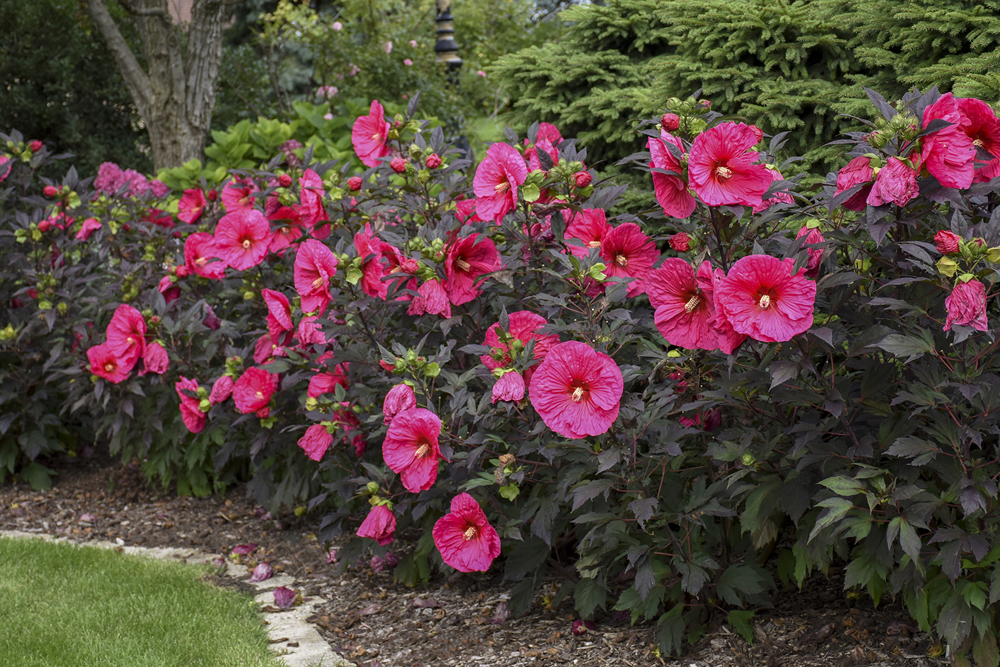
- Well-Draining Soil:
- Plant hibiscus in well-draining soil to prevent waterlogging and root rot.
- Sunlight Requirements:
- Hibiscus thrives in full sun.
- Ensure they receive 6 to 8 hours of sunlight daily.
- Watering:
- Regular watering is crucial, especially during dry periods.
- Avoid overwatering to prevent yellowing leaves or leaf drop.
- Fertilization:
- Use a balanced fertilizer formulated for flowering plants.
- Promotes healthy blooming.
- Pruning:
- Prune hibiscus to encourage bushier growth and more significant flower production.
Happy gardening, and may your hibiscus bloom beautifully! 🌺🌿🌞 .
Common Pests and Diseases of Hibiscus Plants
Hibiscus plants are a delight to cultivate, but they are not without their share of pests and diseases. Let’s explore common pests and diseases that can affect hibiscus plants, along with their symptoms, treatments, and prevention methods:
| Issue | Symptoms | Treatment | Prevention |
|---|---|---|---|
| Hibiscus Sawfly | – Yellowish-green larvae on leaves. – Visible leaf damage. | – Handpick larvae if infestation is minor. – Use insecticidal soap or neem oil for severe cases. | – Regularly inspect leaves for signs of larvae. – Encourage natural predators like ladybugs. |
| Hibiscus Aphid | – Tiny insects on new growth. – Yellowing leaves and distorted growth. | – Spray with strong water stream to dislodge aphids. – Apply insecticidal soap or neem oil. | – Keep plants healthy to reduce vulnerability. – Remove affected leaves promptly. |
| Powdery Mildew | – White, powdery substance on leaves. – Leaves may curl or distort. | – Prune affected leaves. – Apply fungicides (sulfur-based or neem oil). | – Provide good air circulation. – Avoid overhead watering. – Plant resistant varieties. |
| Leaf Spot | – Dark spots on leaves. – Yellowing and premature leaf drop. | – Prune affected leaves. – Apply copper-based fungicides. | – Avoid overhead watering. – Space plants adequately. – Remove fallen leaves promptly. |
| Root Rot | – Yellowing leaves. – Mushy, black or brown roots. | – Remove plant from soil. – Prune affected roots. – Apply fungicide to healthy roots. | – Avoid overwatering. – Ensure well-draining soil. – Sanitize tools to prevent spread. |
| Botrytis Blight | – Grayish-brown spots on flowers. – Flowers may rot. | – Remove affected flowers. – Improve air circulation. – Apply fungicides. | – Avoid overhead watering. – Space plants properly. – Remove dead plant material. |
| Rust | – Orange or brown pustules on leaves. – Yellowing and defoliation. | – Prune affected leaves. – Apply fungicides (copper-based). | – Avoid overhead watering. – Plant resistant varieties. – Remove fallen leaves. |
| Wilt Disease | – Wilting, yellowing, and drooping leaves. – Stunted growth. | – No specific treatment. – Remove and destroy affected plants. | – Plant in well-draining soil. – Avoid overwatering. – Inspect new plants before planting. |
Remember to maintain a vigilant eye on your hibiscus plants, promptly address any issues, and follow preventive measures to keep them healthy and thriving! 🌺
After using Southern Ag Liquid Copper Fungicide in my garden, I am pleased to report positive results. I applied this fungicide to my lemon tree, which was experiencing issues with brown leaves and rotting fruit. Following the application, I observed significant improvement in the health of the tree. Not only did the fruit stop dropping, but the leaves also regained a brighter green color, indicating a reversal of the fungal infection.
Additionally, I found this product effective for controlling mold on my synthetic deck, which tends to accumulate in shaded areas. With just one application per year after pressure washing, I was able to prevent back growth and maintain the cleanliness of my deck effectively. The application directions provided were clear and easy to follow, making the process hassle-free. Overall, I am satisfied with the performance of Southern Ag Liquid Copper Fungicide and would recommend it to others facing similar fungal issues in their gardens.
- Effective Disease Control: Southern Ag Liquid Copper Fungicide effectively controls diseases caused by bacteria and fungi, providing reliable protection for a variety of plants.
- Versatile Application: The new formulation of this fungicide works well with hose end sprayers, offering convenience and ease of application for gardeners.
- Algae and Moss Control: In addition to fungal and bacterial diseases, this fungicide is labeled for the control of moss and algae, making it a versatile solution for various garden issues.
- High Copper Content: With 27.15% Copper diammonia diacetate complex, including 8% Metallic Copper Equivalent, this fungicide provides potent treatment for targeted plant diseases.
- Wide Range of Use: Suitable for use on many fruits, vegetables, turfgrass (for algae control), live oak (for Spanish moss control), and ornamentals, making it a versatile option for gardeners.
- Easy Application: The product provides clear application instructions, making it easy for users to determine the appropriate dosage for their specific plants.
- Staining Potential: Some users have reported that the fungicide may stain certain surfaces such as concrete, siding, shingles, and paint if not applied carefully. This can be a concern for those with nearby structures or surfaces.
- Limited Effectiveness on Spanish Moss: While effective against many fungal and bacterial diseases, some users have found that the fungicide may not fully eliminate Spanish moss, leading to disappointment in its performance for this specific issue.
- Requires Regular Application: For optimal results, regular application may be necessary, especially in cases of severe infestations or persistent fungal issues. This may require additional time and effort on the part of the gardener.
Benefits of Hibiscus Tea
Hibiscus tea, derived from the dried sepals of the hibiscus flower, offers a plethora of health benefits that make it a popular choice among tea enthusiasts.
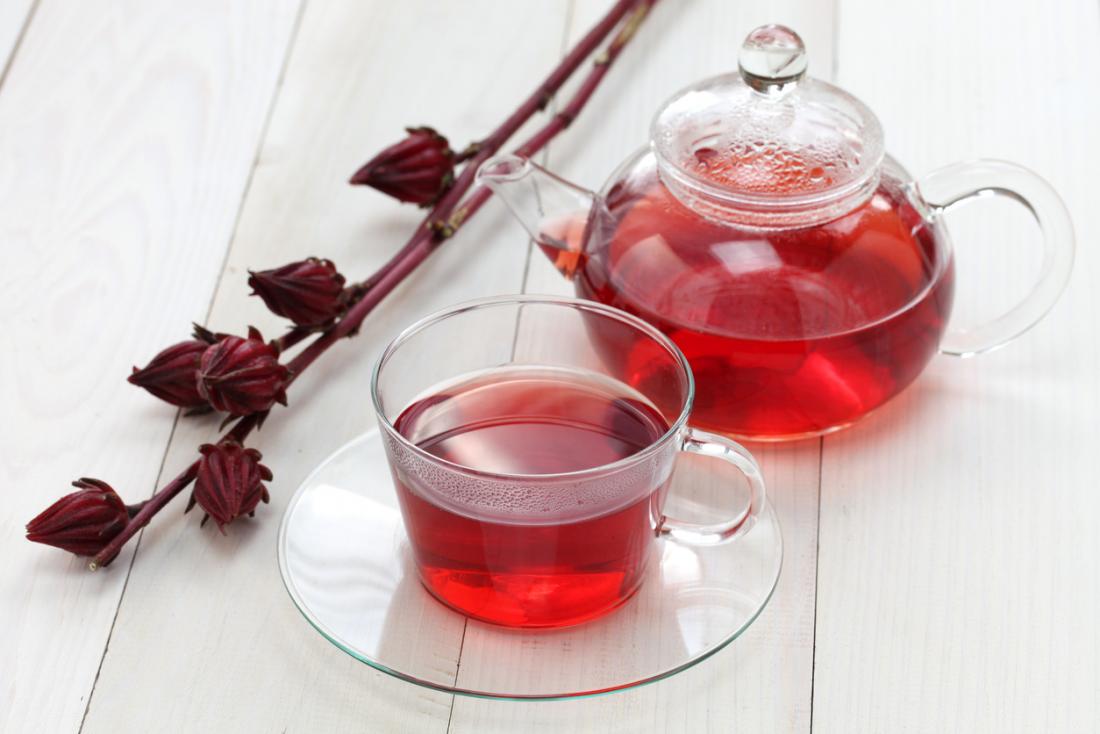
- Antioxidant-rich: Hibiscus tea is rich in antioxidants, which help fight free radicals in the body and reduce oxidative stress, contributing to overall health and well-being.
- Blood pressure and cholesterol: Regular consumption of hibiscus tea has been shown to lower blood pressure and cholesterol levels, promoting cardiovascular health and reducing the risk of heart disease.
- Potential anti-cancer properties: Studies suggest that hibiscus tea may have potential anti-cancer properties due to its high content of polyphenols, which can help inhibit the growth of cancer cells.
- Diuretic properties: Hibiscus tea has diuretic properties that promote healthy kidney function and aid in detoxification by increasing urine production and flushing out toxins from the body.
- Refreshing beverage: With its naturally tart flavor, hibiscus tea is a refreshing beverage option that can be enjoyed hot or cold. Its delicious taste makes it a popular choice for staying hydrated while reaping the numerous health benefits it offers.
Ingredients:
- ¼ cup dried hibiscus flowers
- 4 cups cold filtered water
- Ice (for serving)
- Sweetener of choice (such as sugar, maple syrup, honey)
Instructions:
Steeping the Tea:
- In a saucepan, combine the dried hibiscus flowers and cold water.
- Bring the mixture to a boil, then reduce the heat and let it simmer for about 15-20 minutes.
Sweetening and Serving:
- Mix in your preferred sweetener (sugar, maple syrup, honey) and stir until completely combined.
- Strain the tea to remove the hibiscus flowers.
Serving:
- Serve the hibiscus tea over ice for a refreshing drink.
This recipe allows you to enjoy the vibrant color and tangy flavor of hibiscus tea. Feel free to adjust the sweetness level according to your taste preferences. Enjoy your homemade hibiscus tea!
Hibiscus in Beauty and Skincare Products
Hibiscus is indeed a powerhouse when it comes to enhancing both skin and hair health. Let’s delve into the benefits of hibiscus for both:

Hibiscus for Skin:
- Fights Aging Signs: Hibiscus is rich in antioxidants, which help skin cells recover from damage caused by pollutants, UV rays, and other stressors. The anthocyanins in hibiscus promote elastin production and cell turnover, giving your skin a youthful and supple appearance.
- Evens Skin Tone: Whether it’s hyperpigmentation, dark spots, or uneven skin tone, hibiscus can help. Its malic acid, alpha hydroxy acids, and citric acids work to revamp your skin tone while controlling melanin production.
- Hydrates Skin Well: Hibiscus keeps your skin hydrated and nourished, thanks to its rich nutrient profile. It’s a natural source of vitamins, minerals, and compounds that benefit your skin.
Hibiscus for Hair:
- Strengthens Hair Follicles: Hibiscus extracts contain nutrients like iron, calcium, and phosphorus, which strengthen hair follicles from within. This reduces breakage and prevents premature hair loss.
- Conditions and Moisturizes: Hibiscus keeps your hair healthy and conditioned. It also prevents split ends and adds shine and luster to your locks.
- Promotes Hair Growth: Although scientific evidence is limited, hibiscus is widely accepted in traditional practices (such as Ayurveda) to aid hair growth. It’s nicknamed “nature’s botox” due to its vitamin C and antioxidant content.
- Decreases Frizz: Hibiscus can help decrease frizz, making your hair more manageable and smooth.
Remember, whether you’re using hibiscus for your skin or hair, patch test a small amount first to ensure you don’t have any allergies or sensitivities. Incorporating hibiscus into your beauty routine can lead to healthier, more beautiful-looking skin and hair! 🌺
Hibiscus in Traditional Hawaiian Medicine
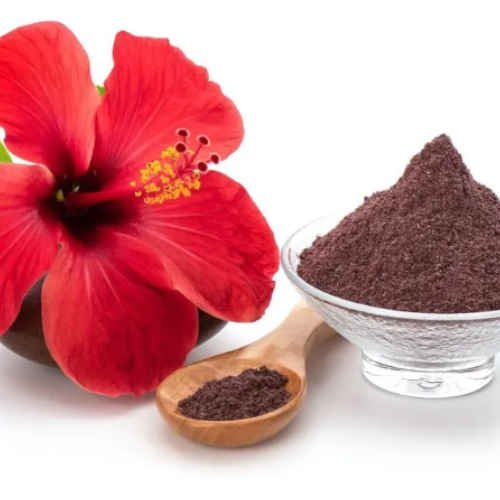
Hibiscus (Koki‘o) holds a revered place in Hawaiian traditional medicine, known as La‘au Lapa‘au. Let’s explore its healing properties and cultural significance:
- Versatile Remedy: Hibiscus is valued for its medicinal properties. Various parts of the plant—flowers, leaves, and roots—are used to address different health concerns.
- Anti-Inflammatory: In Hawaiian culture, hibiscus is believed to have anti-inflammatory effects. It’s used to soothe sore throats and alleviate cold symptoms.
- Digestive Aid: Hibiscus is employed to ease digestive issues. Its diuretic properties may help with fluid balance and overall wellness.
- Skin Solutions: Brewed into teas or poultices, hibiscus is used to treat skin conditions. Its antioxidants promote skin health.
- Deep Connection: The use of hibiscus in traditional healing practices reflects the profound link between nature and well-being in Hawaiian culture.
Next time you admire a hibiscus bloom, remember its dual role—as a vibrant flower and a healing ally! 🌺
Hibiscus Recipes and Culinary Uses
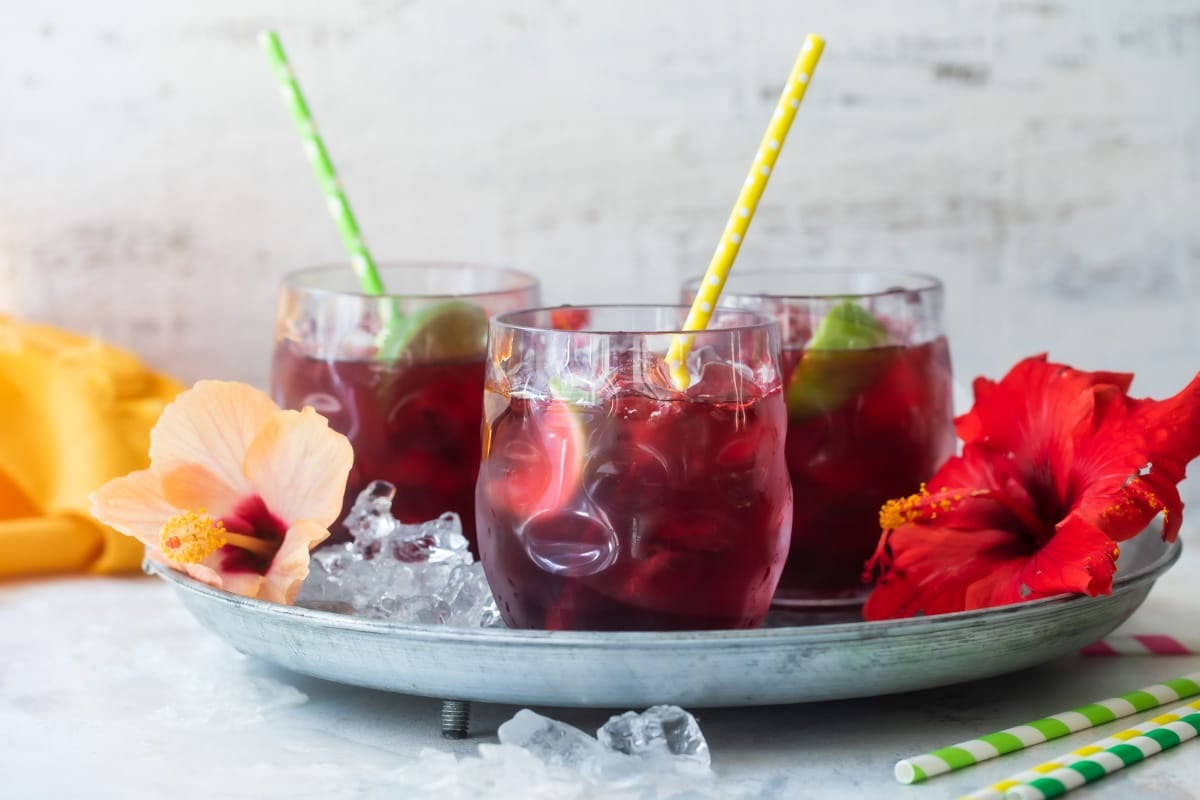
Hibiscus is indeed a versatile and captivating ingredient in the culinary world! Let’s dive deeper into its exciting possibilities:
- Hibiscus Tea and Beverages:
- Infused Teas: Hibiscus petals make vibrant and tangy teas. Brew them in hot water for a refreshing drink.
- Cocktails: Create hibiscus-infused syrups for cocktails. They add color, flavor, and a touch of elegance.
- Sparkling Drinks: Modern mead-makers use hibiscus for sparkling canned drinks, offering a juicy, tannic structure akin to tea.
- Sweet and Savory Dishes:
- Jams and Jellies: Hibiscus, being pectin-rich, is perfect for making flavorful jams and jellies.
- Desserts: Dust hibiscus-infused sugar over pastries or use it in meringues. Think hibiscus doughnuts!
- Salads and Garnishes: Add hibiscus petals to salads or use them as colorful garnishes for desserts.
- Health Benefits:
- Rich in antioxidants and Vitamin C, hibiscus contributes to overall wellness.
- Its tart and floral flavor elevates both sweet and savory dishes.
Remember, whether you’re sipping hibiscus tea or creating a hibiscus-infused masterpiece, this floral gem brings vibrancy and health benefits to your culinary adventures! 🌺
Hibiscus in Art and Design
In the realm of art and design, the hibiscus flower holds a special place for its vibrant colors and intricate beauty.

- Inspiration for Artists and Designers:
- Hibiscus serves as a muse for various creative mediums.
- Inspires intricate paintings, sculptures, fabric prints, and decorative motifs.
- Versatile Motif:
- Unique shape and vibrant hues make hibiscus a popular design element.
- Adorns textiles, pottery, jewelry, and more.
- Exotic Allure:
- Hibiscus adds an exotic touch to artistic creations.
- Graceful petals and striking colors enhance traditional and contemporary designs.
Infuse your art and designs with the tropical charm of hibiscus! 🌺🎨🌿 .
Hibiscus Festivals and Events
Hibiscus festivals and events celebrate the beauty and cultural significance of this vibrant flower.
- Dazzling array of varieties: Hibiscus festivals feature a wide range of hibiscus varieties, showcasing classic single blooms to show-stopping double petals in various hues.
- Attraction for enthusiasts: Flower enthusiasts and gardeners are drawn to these festivals to marvel at the intricate floral displays and to learn more about the care and cultivation of hibiscus plants.
- Floral competitions: One of the highlights of Hibiscus festivals is the floral competitions, where growers showcase their prized blooms for a chance to win prestigious awards. These competitions add excitement and anticipation to the event.
- Art exhibitions and performances: Visitors can enjoy hibiscus-themed art exhibitions, live music performances, and culinary creations featuring hibiscus as a star ingredient. These additional attractions enhance the festival experience and provide entertainment for attendees.
- Platform for enthusiasts: Hibiscus festivals serve as a unique platform for hibiscus enthusiasts to come together, exchange knowledge, and immerse themselves in the beauty of this beloved flower. It fosters a sense of community and camaraderie among attendees who share a passion for hibiscus cultivation and appreciation.
Conservation Efforts for Hawaiian Hibiscus
Conservation efforts for Hawaiian Hibiscus are crucial in preserving the unique biodiversity of these iconic flowers.
- Awareness and Sustainable Practices:
- Raise awareness about threats to Hawaiian Hibiscus.
- Implement sustainable practices to protect their ecosystem.
- Habitat Restoration:
- Restore and preserve natural habitats.
- Create safe spaces for hibiscus growth.
- Invasive Species Protection:
- Guard against invasive species that threaten native plants.
- Prevent competition and habitat disruption.
- Endangered Varieties Propagation:
- Propagate and conserve endangered hibiscus varieties.
- Ensure genetic diversity for long-term survival.
- Collaborative Initiatives:
- Collaborate among botanists, conservationists, and local communities.
- Address challenges like habitat destruction and climate change.
Together, we can secure a thriving future for the cherished Hawaiian Hibiscus! 🌺🌿🌎 .
Future Trends in Hibiscus Research and Development
The future of hibiscus research and development is indeed promising. Let’s delve into the exciting trends:
- Climate Resilience:
- Researchers are dedicated to enhancing hibiscus plants’ resilience to climate change. Genetic modification techniques are explored to make them more tolerant to drought, pests, and diseases.
- Sustainable cultivation practices are crucial to ensure hibiscus thrives in changing environmental conditions.
- Bioactive Compounds:
- Hibiscus flowers are a treasure trove of bioactive compounds. Scientists are keen on extracting these natural substances.
- Applications span across pharmaceuticals, cosmetics, and functional foods. Imagine hibiscus-infused skincare products or health-enhancing supplements!
- Health Beyond Tradition:
- Beyond traditional medicine, hibiscus is under the scientific spotlight. Researchers explore its antioxidant, anti-inflammatory, and antimicrobial properties.
- These studies pave the way for innovative products that harness hibiscus for human well-being.
In the coming years, hibiscus may surprise us with breakthroughs that elevate its significance across various scientific and industrial domains! 🌺
Watch video for more information:
FAQ
Are there any new hibiscus varieties being developed through research and development?
Yes, researchers are constantly working on developing new hibiscus varieties with unique colors, shapes, and sizes to enhance the beauty of gardens and landscapes.
What innovative uses of hibiscus are being explored in research and development?
Researchers are exploring the potential use of hibiscus in pharmaceuticals, nutraceuticals, and cosmetics due to its antioxidant and anti-inflammatory properties.
How is technology being utilized in hibiscus research and development?
Technology such as genetic modification and advanced breeding techniques are being used to improve hibiscus plants for better disease resistance, higher yields, and enhanced characteristics.
Are there any sustainability initiatives in hibiscus research and development?
Yes, researchers are focusing on sustainable agriculture practices to minimize environmental impact and conserve resources in hibiscus cultivation.
How is hibiscus research and development contributing to economic growth?
By developing new hibiscus products and varieties, research and development efforts are creating opportunities for economic growth in industries such as agriculture, tourism, and healthcare.

Studied Agricultural Engineering-Plant Protection at University of California, Davis.
Head of Content writing team at Southelmontehydroponics.com

